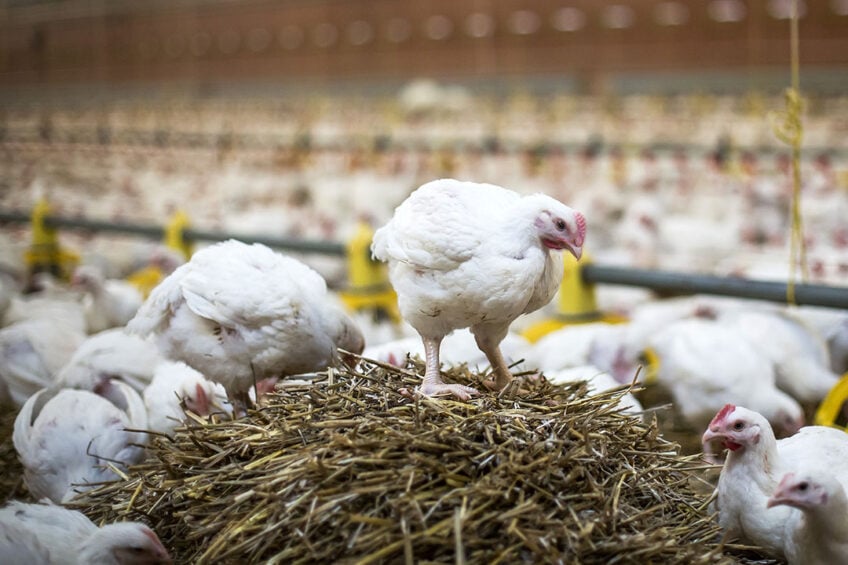May 24, 2025 | 16:26 GMT +7
May 24, 2025 | 16:26 GMT +7
Hotline: 0913.378.918
May 24, 2025 | 16:26 GMT +7
Hotline: 0913.378.918

James Bentley, Hubbard technical director, says that breed choice and efficiency were critical for reducing the global warming potential for slower-growing birds. Photo: Diederik van der Lane
Based on calculations for a typical European broiler feed ration, 85% of the feed footprint is due to feed ingredients, with the remaining 15% stemming from processing and transport.
Speaking at the recent Hubbard Premium Forum in Evian, France, James Bentley, Hubbard technical director, told delegates that breed choice and efficiency were critical for reducing the global warming potential for slower-growing birds. “Feed is the major factor we can manipulate,” he stressed.
Possible mitigations included:
Dr Bentley said maintaining appropriate protein levels in rations was essential, especially around the amino acid percentages in the feed versus conventional broilers. For example, using lower protein diets for the Dutch Beter Leven 1*, adapted to the breed requirement, helps to reduce the impact of LUC ingredients like non-certified soya, using alternatives and certified soya.
While field beans have shown progress as an alternative protein source to soya, results have been mixed and major poultry operations need consistent inputs to maintain efficiency. There is also a large problem with supply chains for rapeseed, sunflower and legumes, meaning that some of the soya alternatives are not agronomically attractive to producers.
Other technologies like insects, PAP, algal protein, grass protein and yeast by-products are on the horizon but are not immediate solutions in Europe. There was a need to assess each product’s CO2 status versus certified soya, but there was also a long-term incentive to use them for their impact in regenerative/circular agriculture.
Turning to nutrient density, Dr Bentley said the least-cost feed is high in energy, which means high in protein, and further needs a high soya percentage. The challenge ahead is to use lower nutrient density diets and avoid the need to use “nutrient dense” high protein ingredients like soya, with a high LUC, for Better Chicken Commitment broilers. Using more local ingredients and cereals as a percentage of total protein could be a way forward.
One company that is producing a low carbon footprint for its chickens is Norwegian-based Norsk Kylling. Results of the lifecycle analysis completed in 2021 showed that the carbon footprint for raw chicken products produced by the company was 4.1 CO2 equivalent per kg – a lower carbon footprint than Norwegian-farmed Atlantic salmon.
Switching from faster-growing Ross birds to slower-growing Hubbard broilers led to a 1% decline in the carbon footprint. There was also lower feed consumption in rearing and layer farm production, reduced mortality, and reduced transport needs.
In summary, Dr Bentley highlighted the following feed GWP mitigations:
(PW)

(VAN) Alt Carbon has raised $12 million in a seed round as it plans to scale its carbon dioxide removal work in the South Asian nation.

(VAN) Attempts to bring down the price of the Japanese staple have had little effect amid a cost-of-living crisis.

(VAN) Fourth most important food crop in peril as Latin America and Caribbean suffer from slow-onset climate disaster.

(VAN) Shifting market dynamics and the noise around new legislation has propelled Trouw Nutrition’s research around early life nutrition in poultry. Today, it continues to be a key area of research.

(VAN) India is concerned about its food security and the livelihoods of its farmers if more US food imports are allowed.

(VAN) FAO's Director-General emphasises the need to work together to transform agrifood systems.

(VAN) Europe is facing its worst outbreak of foot-and-mouth since the start of the century.